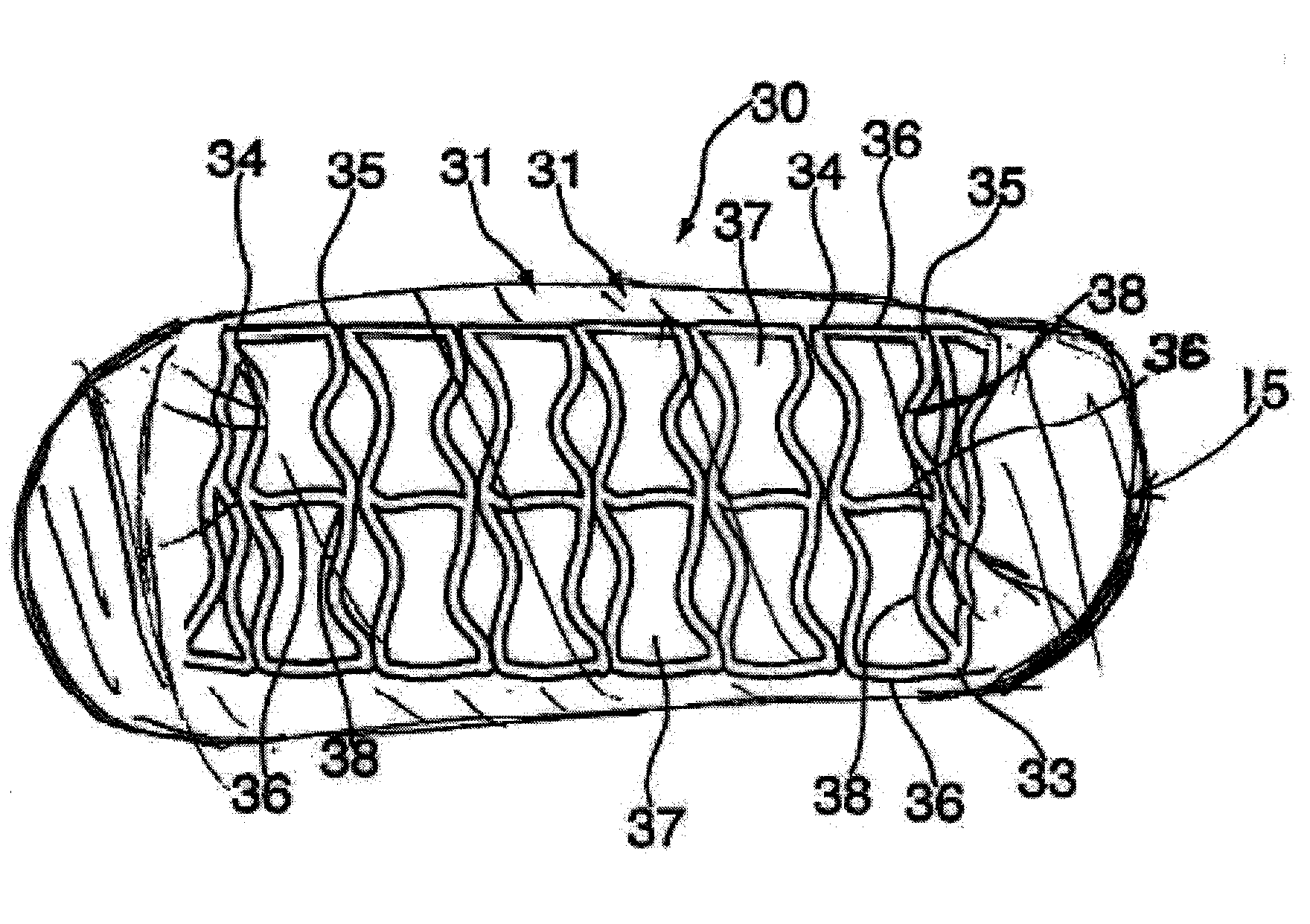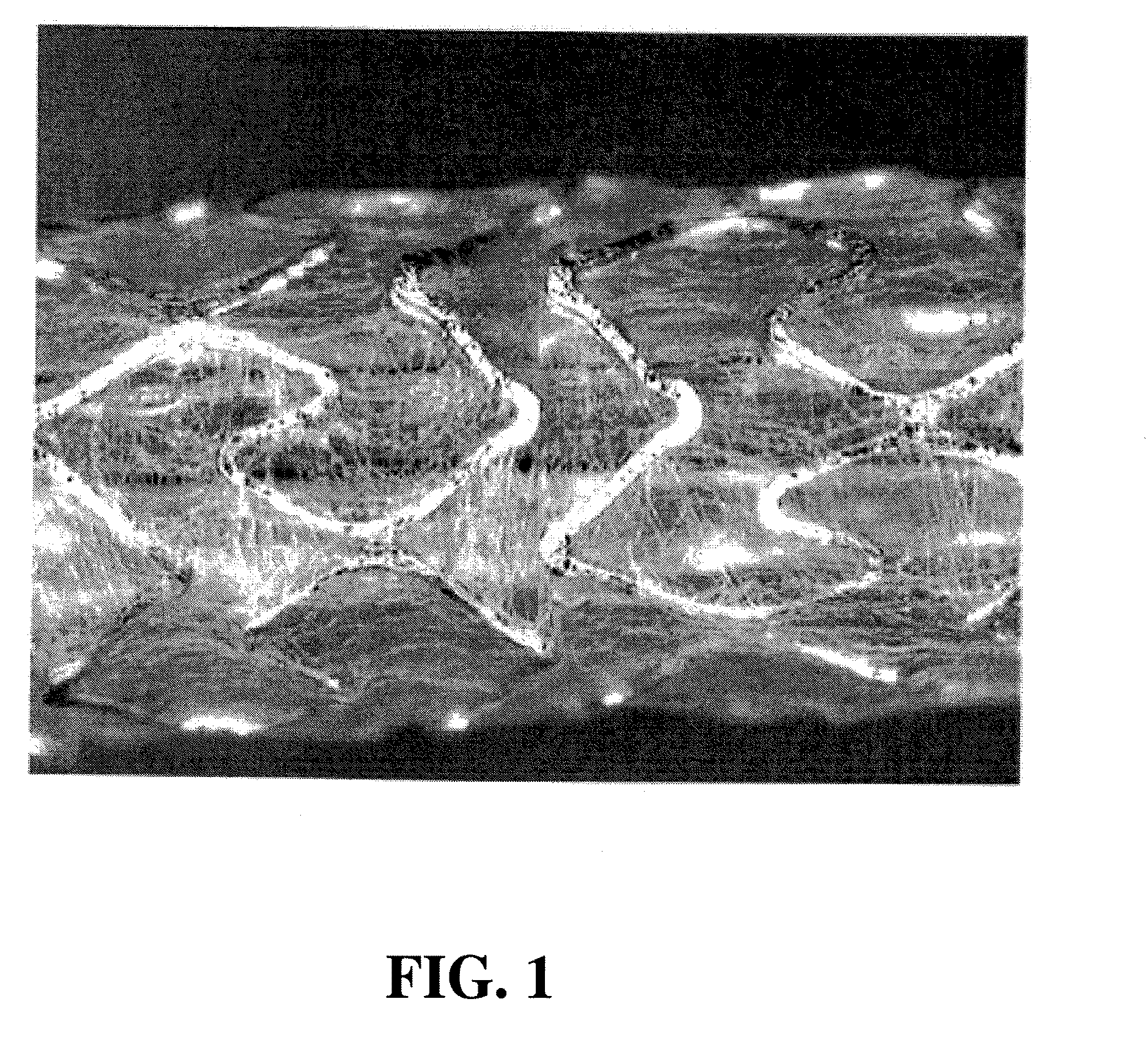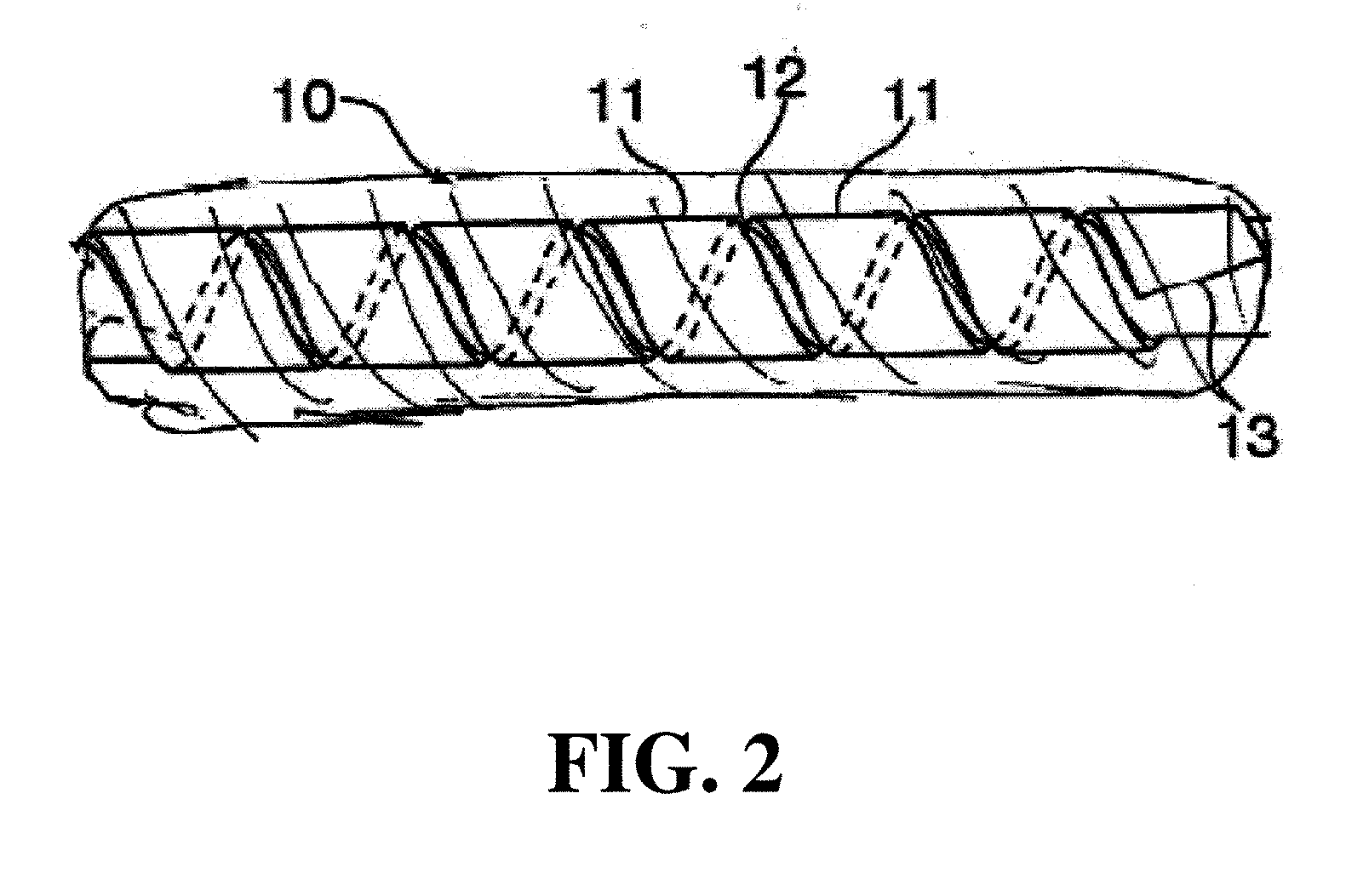Helical hybrid stent
a hybrid stent and helical technology, applied in the field of stents, can solve the problems of increased trauma to the vessel, interference with the vessel's natural tendency to bend and stretch, and the inability of stents with good flexibility to provide sufficient and/or uniform radial support for the vessel wall
- Summary
- Abstract
- Description
- Claims
- Application Information
AI Technical Summary
Benefits of technology
Problems solved by technology
Method used
Image
Examples
Embodiment Construction
[0025]This invention provides a new class of intraluminal prosthetic devices defined as helical hybrid stents. In particular, the stents of the present invention comprise a main stent component in the form of a helical tubular structure. The main stent component may be held in its coiled position by a second component, securing the helical coils into a tubular structure. The second component may be one or more of a variety of means for securing the main stent component in the tubular form. The second component may be, for example, weld points, interlocking means and / or a polymer. In one embodiment, the second component comprises a polymer or polymer fibers which wraps around or embeds itself in the coiled main stent component. The elastic range of the polymer fiber layer must be sufficient to allow expansion of the stent and maximal bending during and after implantation without reaching the elastic limit.
[0026]The stent of the present invention may be balloon expandable or self-expa...
PUM
| Property | Measurement | Unit |
|---|---|---|
| temperature | aaaaa | aaaaa |
| speed | aaaaa | aaaaa |
| velocity | aaaaa | aaaaa |
Abstract
Description
Claims
Application Information
 Login to View More
Login to View More - R&D
- Intellectual Property
- Life Sciences
- Materials
- Tech Scout
- Unparalleled Data Quality
- Higher Quality Content
- 60% Fewer Hallucinations
Browse by: Latest US Patents, China's latest patents, Technical Efficacy Thesaurus, Application Domain, Technology Topic, Popular Technical Reports.
© 2025 PatSnap. All rights reserved.Legal|Privacy policy|Modern Slavery Act Transparency Statement|Sitemap|About US| Contact US: help@patsnap.com



